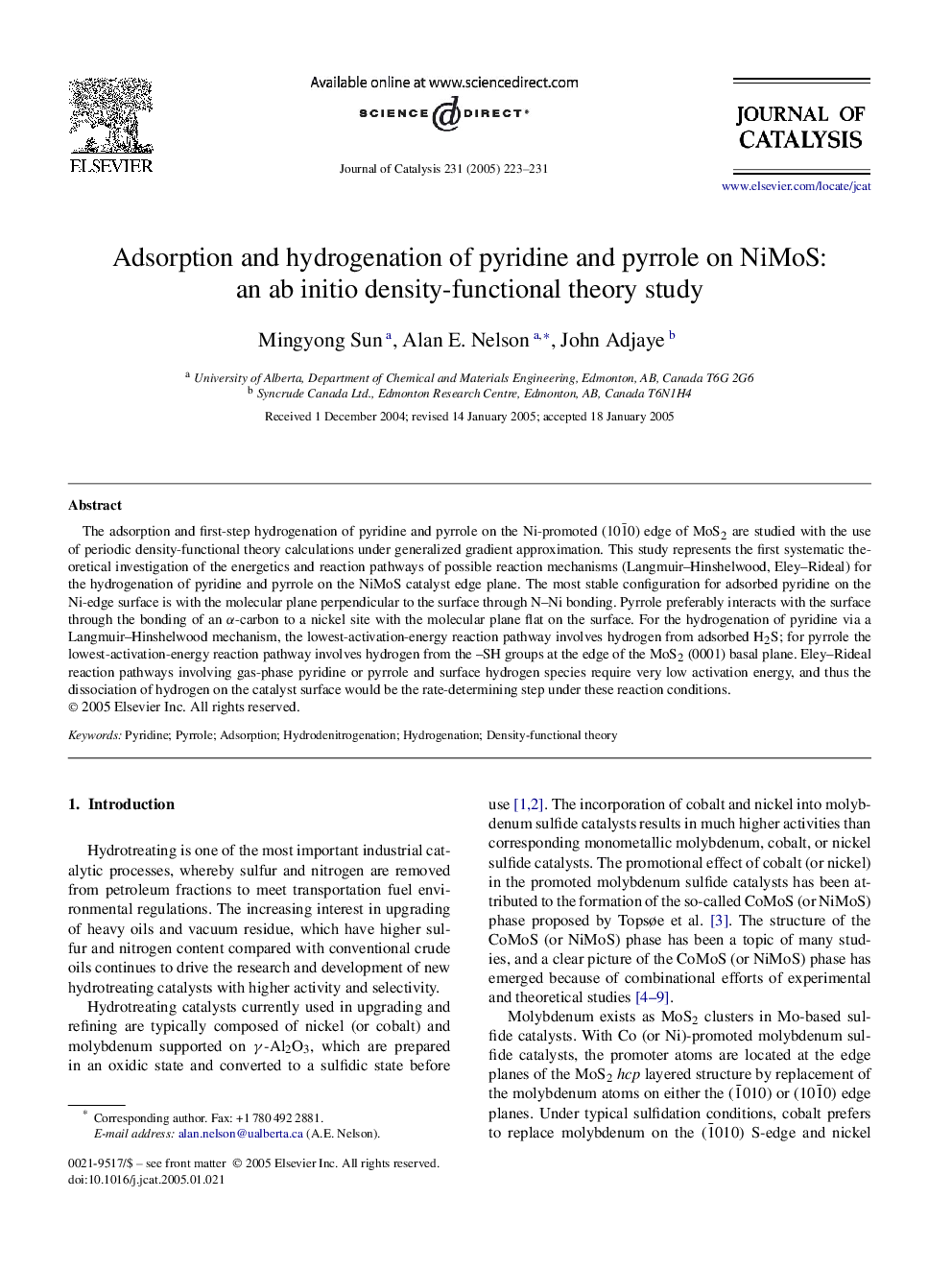| Article ID | Journal | Published Year | Pages | File Type |
|---|---|---|---|---|
| 10244733 | Journal of Catalysis | 2005 | 9 Pages |
Abstract
The adsorption and first-step hydrogenation of pyridine and pyrrole on the Ni-promoted (101¯0) edge of MoS2 are studied with the use of periodic density-functional theory calculations under generalized gradient approximation. This study represents the first systematic theoretical investigation of the energetics and reaction pathways of possible reaction mechanisms (Langmuir-Hinshelwood, Eley-Rideal) for the hydrogenation of pyridine and pyrrole on the NiMoS catalyst edge plane. The most stable configuration for adsorbed pyridine on the Ni-edge surface is with the molecular plane perpendicular to the surface through NNi bonding. Pyrrole preferably interacts with the surface through the bonding of an α-carbon to a nickel site with the molecular plane flat on the surface. For the hydrogenation of pyridine via a Langmuir-Hinshelwood mechanism, the lowest-activation-energy reaction pathway involves hydrogen from adsorbed H2S; for pyrrole the lowest-activation-energy reaction pathway involves hydrogen from the SH groups at the edge of the MoS2 (0001) basal plane. Eley-Rideal reaction pathways involving gas-phase pyridine or pyrrole and surface hydrogen species require very low activation energy, and thus the dissociation of hydrogen on the catalyst surface would be the rate-determining step under these reaction conditions.
Related Topics
Physical Sciences and Engineering
Chemical Engineering
Catalysis
Authors
Mingyong Sun, Alan E. Nelson, John Adjaye,
